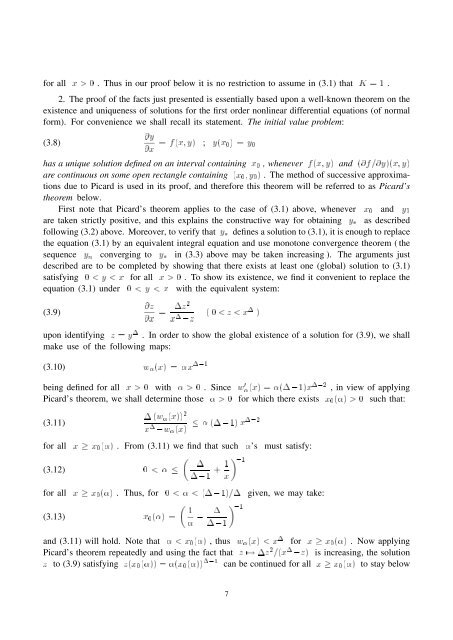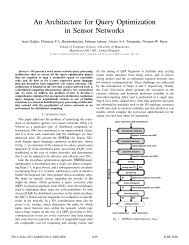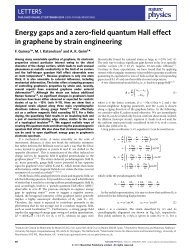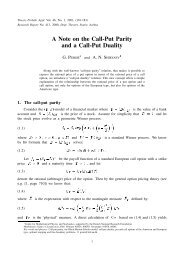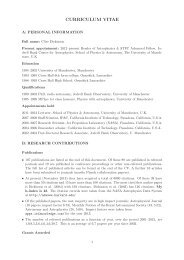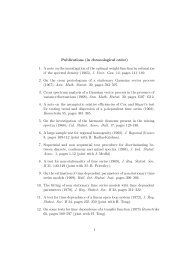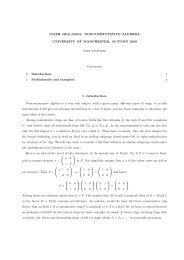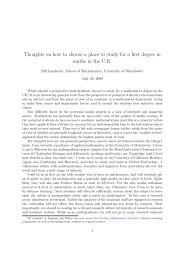inequality for geometric Brownian motion
inequality for geometric Brownian motion
inequality for geometric Brownian motion
You also want an ePaper? Increase the reach of your titles
YUMPU automatically turns print PDFs into web optimized ePapers that Google loves.
<strong>for</strong> all x > 0 . Thus in our proof below it is no restriction to assume in (3.1) that K = 1 .2. The proof of the facts just presented is essentially based upon a well-known theorem on theexistence and uniqueness of solutions <strong>for</strong> the first order nonlinear differential equations (of normal<strong>for</strong>m). For convenience we shall recall its statement. The initial value problem:(3.8)@y@x = f(x; y) ; y(x 0) = y 0has a unique solution defined on an interval containing x 0 , whenever f(x; y) and (@f=@y)(x; y)are continuous on some open rectangle containing (x 0 ; y 0 ) . The method of successive approximationsdue to Picard is used in its proof, and there<strong>for</strong>e this theorem will be referred to as Picard’stheorem below.First note that Picard’s theorem applies to the case of (3.1) above, whenever x 0 and y 0are taken strictly positive, and this explains the constructive way <strong>for</strong> obtainingy3 as describedfollowing (3.2) above. Moreover, to verify that y3 defines a solution to (3.1), it is enough to replacethe equation (3.1) by an equivalent integral equation and use monotone convergence theorem ( thesequence y n converging to y3 in (3.3) above may be taken increasing ). The arguments justdescribed are to be completed by showing that there exists at least one (global) solution to (3.1)satisfying 0 < y < x <strong>for</strong> all x > 0 . To show its existence, we find it convenient to replace theequation (3.1) under 0 < y < x with the equivalent system:(3.9)@z@x =1z2x 1 0z( 0 < z < x 1 )upon identifying z = y 1 . In order to show the global existence of a solution <strong>for</strong> (3.9), we shallmake use of the following maps:(3.10) w (x) = x 101being defined <strong>for</strong> all x > 0 with > 0 . Since w 0 (x) = (101)x 102 , in view of applyingPicard’s theorem, we shall determine those > 0 <strong>for</strong> which there exists x 0 () > 0 such that:(3.11)1 (w (x)) 2x 1 0w (x) (101) x102<strong>for</strong> all x x 0 () . From (3.11) we find that such ’s must satisfy:(3.12) 0 < 1101 + 1 x 01<strong>for</strong> all x x 0 () . Thus, <strong>for</strong> 0 < < (101)=1 given, we may take:(3.13) x 0 () = 1 0 1101 01and (3.11) will hold. Note that < x 0 () , thus w (x) < x 1<strong>for</strong> x x 0 () . Now applyingPicard’s theorem repeatedly and using the fact that z 7! 1z 2 =(x 1 0z) is increasing, the solutionz to (3.9) satisfying z(x 0 ()) = (x 0 ()) 101 can be continued <strong>for</strong> all x x 0 () to stay below7


